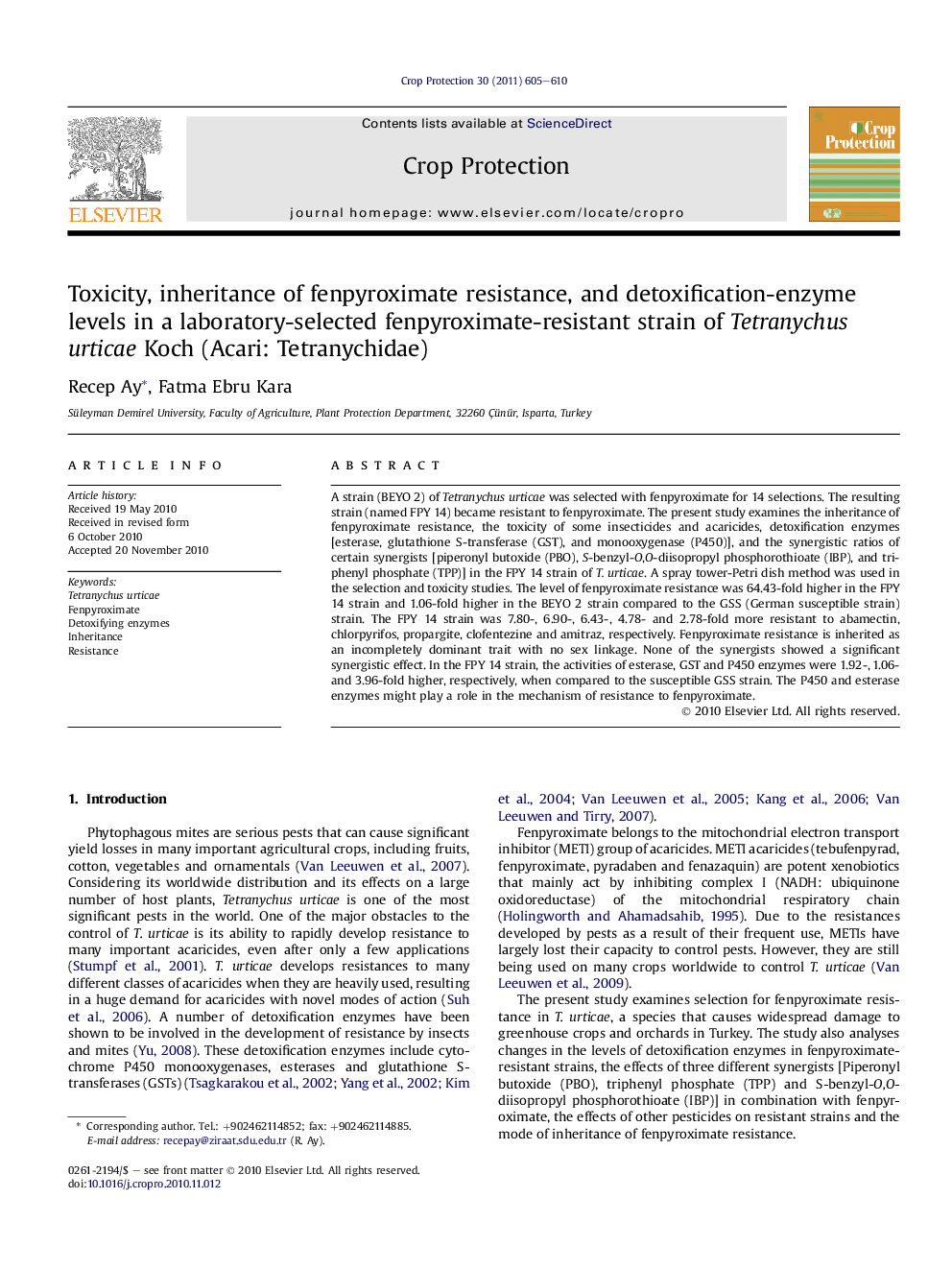| Article ID | Journal | Published Year | Pages | File Type |
|---|---|---|---|---|
| 4507050 | Crop Protection | 2011 | 6 Pages |
A strain (BEYO 2) of Tetranychus urticae was selected with fenpyroximate for 14 selections. The resulting strain (named FPY 14) became resistant to fenpyroximate. The present study examines the inheritance of fenpyroximate resistance, the toxicity of some insecticides and acaricides, detoxification enzymes [esterase, glutathione S-transferase (GST), and monooxygenase (P450)], and the synergistic ratios of certain synergists [piperonyl butoxide (PBO), S-benzyl-O,O-diisopropyl phosphorothioate (IBP), and triphenyl phosphate (TPP)] in the FPY 14 strain of T. urticae. A spray tower-Petri dish method was used in the selection and toxicity studies. The level of fenpyroximate resistance was 64.43-fold higher in the FPY 14 strain and 1.06-fold higher in the BEYO 2 strain compared to the GSS (German susceptible strain) strain. The FPY 14 strain was 7.80-, 6.90-, 6.43-, 4.78- and 2.78-fold more resistant to abamectin, chlorpyrifos, propargite, clofentezine and amitraz, respectively. Fenpyroximate resistance is inherited as an incompletely dominant trait with no sex linkage. None of the synergists showed a significant synergistic effect. In the FPY 14 strain, the activities of esterase, GST and P450 enzymes were 1.92-, 1.06- and 3.96-fold higher, respectively, when compared to the susceptible GSS strain. The P450 and esterase enzymes might play a role in the mechanism of resistance to fenpyroximate.
► A strain (BEYO 2) of Tetranychus urticae was selected with fenpyroximate for 14 selections. ► The level of fenpyroximate resistance was 64.43-fold higher in selected strain (the FPY 14) and 1.06-fold higher in the BEYO 2 strain compared to susceptible the GSS. ► The FPY 14 strain was moderate resistant to abamectin, chlorpyrifos, propargite, clofentezine, respectively and low resistant amitraz. ► Fenpyroximate resistance is inherited as an incompletely dominant trait with no sex linkage. ► In the FPY 14 strain, the activities of esterase, GST and P450 enzymes were increased when compared to the susceptible GSS strain.
